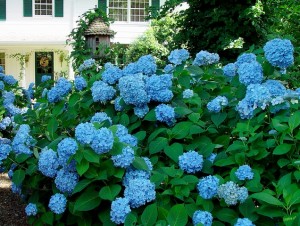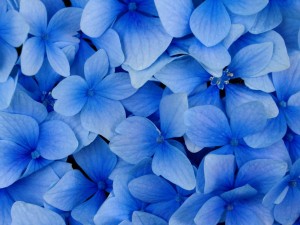As fall approaches, I am sure you have set your eyes on at least one of the many different versatile hydrangeas that dot the landscape. With ample rain and cooler summer conditions these beauties have garnered attention in our gardens as early as May and are still showing themselves off in our landscapes.
You might be wondering how this lengthy bloom sequence is possible. There are several different species of hydrangea that perform well in our zone 5-6 climate and flower with almost perfect timing. All species lend to the landscape their wonderful flowers, but also offer other great attributes in the form of fall color and interesting bark.
It is quite a challenge to resist buying only one type of hydrangea for your garden, so most of us have at least two, or in my case one of many different types. The key to proper planting sites lies in understanding their different growing requirements and pruning needs.
The following is a short list of the different species, their attributes, and growing requirements.
Hydrangea arborescens; (Click to see it!) This is an Indiana native with the most popular cultivar being “Annabelle”. This hydrangea flowers on new growth and can be cut back hard in early March. Deep green leaves on strong stems emerge in spring and the large, white ball shaped flower clusters appear in late May. This hydrangea can take filtered sun to shade and makes a nice cut flower for use indoors. Fertilize with a general purpose fertilizer.
Hydrangea macrophylla; (Click to see it!) Also known as the large leaf/mop hydrangeas, flower on old growth and should not be pruned until new growth emerges on the stems in spring. Cutting the dead parts of the stem back to the new growth will help encourage flowering around Mother’s day. However, if the winter was severe enough to kill the plant to the ground, flowering will be almost non-existent. These plants also benefit from regular doses of aluminum or magnesium sulfate, which changes the PH of the soil and aids in turning the normally pink flowers to a periwinkle blue. These plants can take sun but wilt less in shade. Ample water through the hot summer months is a must.
Hydrangea quercifolia: (Click to see it!) Oakleaf hydrangea. Large oak shaped leaves will turn beautiful shades of orange and purple/red in the fall. White flowers emerge in June and persist into early July. This hydrangea should be pruned before new growth emerges. “Snow Queen” is one of the most popular cultivars. This is a course textured plant that fits well in a shrub border. As the leaves drop they reveal a wonderful cinnamon colored exfoliating bark. This is a variety that makes a bold statement.
Hydrangea paniculata; (Click to see it!) As a group, these hydrangeas offer the longest bloom sequence of them all. Depending upon the cultivar, blooming begins as early as mid July and persists into September. “Tardiva”, “Limelight”, and “Pinky Winky” are popular cultivars. These plants flower on new growth and can be pruned back to control height, but mid to late summer pruning will keep the plant from blooming. They can tolerate sun or light shade and work well in the shrub border or as a specimen.
 I enjoy leaving the aging blooms on all of these species throughout the season for further visual interest, removing in March as I prune. If you do not have one of these outstanding plants in your garden find a place soon, as you will be pleased you did.
I enjoy leaving the aging blooms on all of these species throughout the season for further visual interest, removing in March as I prune. If you do not have one of these outstanding plants in your garden find a place soon, as you will be pleased you did.
